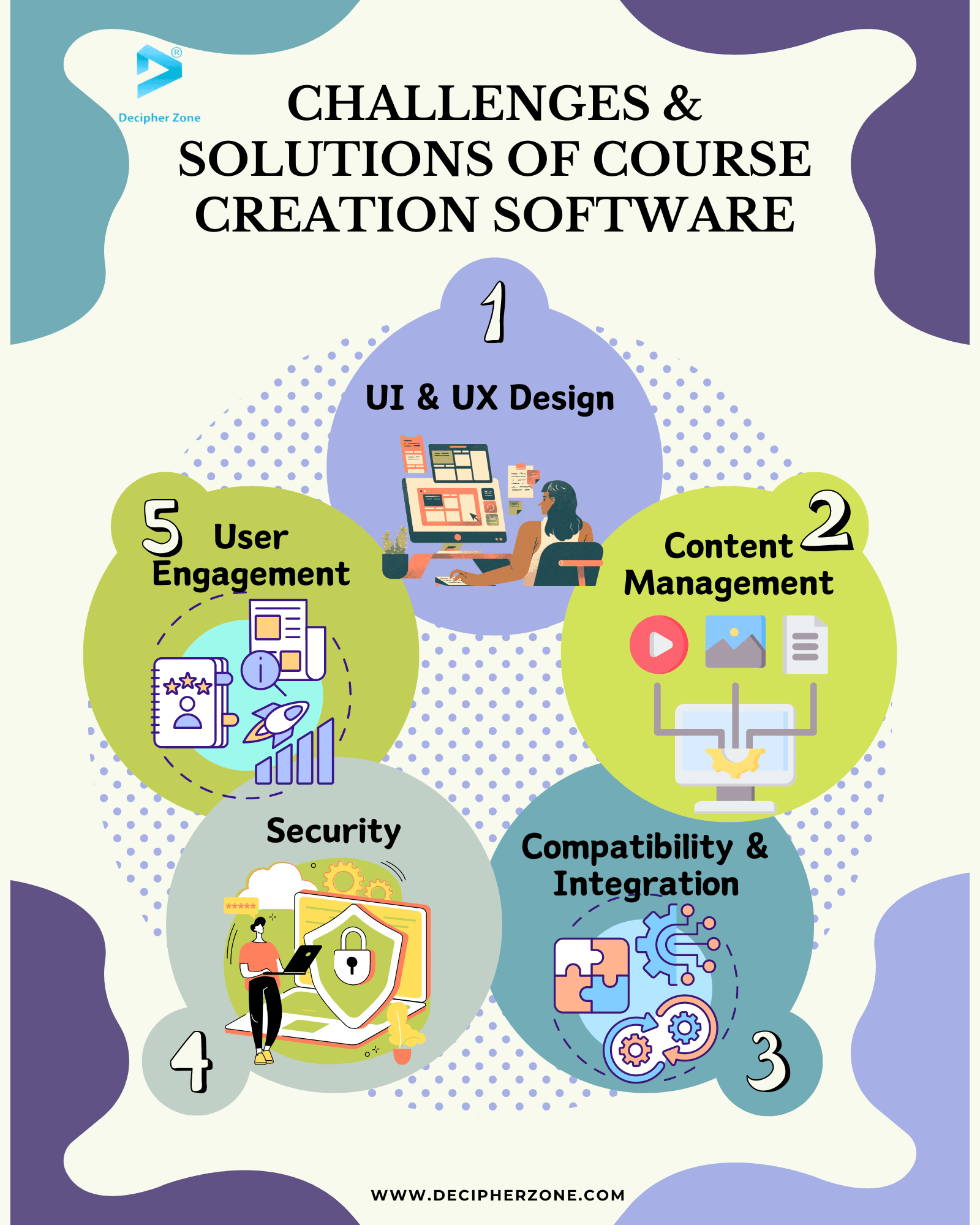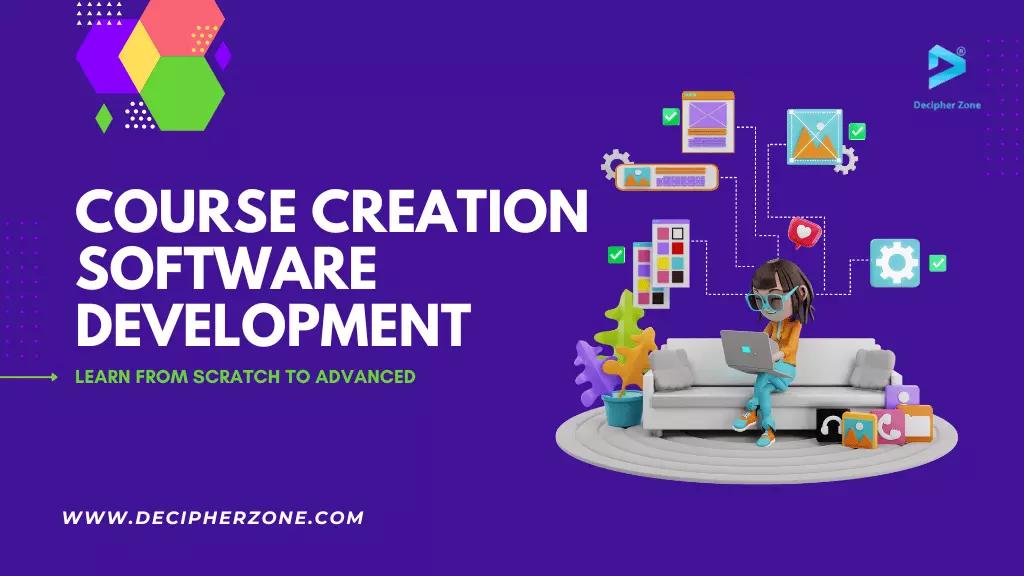With a mixture of basic and advanced features and functionality, you can create impressive and modish software. However, there are many challenges while building software development such as designing the user interface to ensure compatibility with different devices and platforms. This blog discusses the solutions, advantages, and other aspects of course creation software development.
Due to the lockdowns imposed during the COVID-19 pandemic, online education has significantly increased in popularity. As a result, e-learning has emerged as a promising approach to enhancing and acquiring new skills in today's ever-changing world.
If you are a passionate educator or educational institute and want to invest in course creation software development, this blog is your asset. We will discuss how to create software that enhances educators to design and deliver high-quality courses, reaching a global audience, and driving learning outcomes.
Read: Software Development Challenges and Solutions
You can acquire complete information on all aspects of course software development to bring your vision to life. So, let’s begin with understanding course creation software.
Defining Course Creation Software
Course authoring software is utilized to create educational content and training courses that can be used in online learning environments. Educators, trainers, and instructional designers use course creation platforms to engage and provide interactive learning experiences to students and learners.
Additionally, the software includes templates and themes to help users design visually appealing courses without any need for advanced design skills. Moreover, with the help of assessment tools and features, users can create quizzes and exams.
Advantages of Course Creation Software
The platform offers a range of benefits that streamline the course development process and enhance the learning experience. Below are some of the advantages,
-
Efficient User-interface
The platform provides templates and interfaces that simplify the process of creating courses. Educators can develop content without any advanced technological assistance.
-
Customization and Flexibility
The platform allows for custom course content, structure, and design according to the educators' needs. They can modify the content to meet the learners' requirements, styles, and preferences.
-
Collaboration & Interactivity
The platform provides a collaborative tool for learners to exchange ideas, engage in group discussions, and offer real-time feedback. This enhances learning and facilitates the analysis of various perspectives.
-
Assessment & Feedback
The platform offers assessments, quizzes, and assignments to evaluate the learners’ progress. Educators can monitor learners' performance, and progress and provide simultaneous feedback to support and increase the esteem.
-
Convenience
The platform is accessible anytime, anywhere allowing learners to study at their own pace without putting peer pressure. This feature significantly enhances the flexibility and convenience of busy individuals and working professionals.
Read: Software Development Trends in 2024
Features of Course Creation Software: Basic & Advanced
In the world of e-learning, the right software can make all the difference. With the right features, you can create courses that are engaging, effective, and easy to manage. So what are the key features you should be looking for? Here are some essential tools that can help you take your courses to the next level and some advanced ones to stand out from the competition.
-
Interactive Interface
The interactive interface allows course creators to navigate and create course content without technical assistance. Also, easy-to-use tools and intuitive design make the process of learning efficient and effective.
-
Audiovisual Support
This enables educators to incorporate a variety of multimedia elements into their courses like audio files, videos, images, and interactive content. This helps the learning experience and serves different learning styles.
-
Templates
The template feature offers pre-designed layouts and structures that educators can use while creating course content which saves time, and effort, especially for beginners.
-
Assessment Tools
This tool allows educators to create quizzes, exams, and assignments to record the progress and evaluate learners' understandings. The quizzes and exams in this software include multiple-choice questions, essay questions, and interactive assessments.
-
Performance Monitoring
This feature enables educators to track the learners' progress and performance throughout the course. This helps educators focus on learners who are struggling and target particular areas of the course.
-
Active Learning Elements
This is an advanced feature that allows learners to experience real classroom experiences including discussion forums, polls, and surveys. Moreover, it enhances the interaction of learners with each other and with content creators.
-
Device Compatibility
This feature allows the software to be compatible with any device the learner wishes to study such as mobile phone, tablet, and laptop. This ensures the flexibility, and convenience of the learners to learn.
-
Student Management
This feature allows to manage learners' profiles, track enrollment, and monitor progress.
Read: Benefits of Hiring a Software Development Company
Challenges & Solutions of Course Creation Software
Creating software comes with various challenges, from designing the user interface to ensuring compatibility with different devices and platforms. Let’s explore the challenges and their solutions in Course Creation Software Development.

-
UI & UX Design
One of the key challenges is designing a user interface. The interface must be easy to use and navigate, allowing educators to create engaging courses without requiring extensive training.
Solution: Conducting user research and testing can help developers understand user needs and requirements better. Iterative design processes can also help in creating a more intuitive user experience.
-
Content Management
Content managing and organizing can be challenging including text, images, videos, and assignments mainly in large-scale course creation software.
Solution: Implementing a robust content management system that can help in managing and organizing content efficiently. Moreover, cloud storage solutions can help manage large files and ensure accessibility.
-
Compatibility & Integration
It is rigorous to run smoothly on various platforms including laptops, mobile phones, tablets, and desktops, and integration with other software systems such as learning management systems, and e-commerce platforms.
Solution: Adopting responsive design techniques ensures compatibility with devices. Also, industry standards can simply integrate efforts of interoperability with other systems.
-
Security
Another challenge is security, it is important to protect software from data breaches and malware attacks.
Solution: Implementing regular security audits, a strong encryption protocol, and access control mechanisms can enhance the security of the course creation software.
-
User Engagement
Keeping the learners throughout the course is a challenging part of the software’s success.
Solution: Incorporating interactive elements can enhance user engagement. Providing feedback and progress to users can also encourage them to complete the course.
Read: Building a Successful Career in Software Development
Course Creation Programs in Different Sectors
Cource creation software is valuable across all industries, providing opportunities to learn new skills. Let's explore the various sectors and the courses they offer.
-
Educational Institutes
Institutes can use course creation software to offer courses for K-12 and university-level students. The courses offer lessons, assignments, and engaging content to enrich the students' learning experiences.
-
Professional Training & Development
Businesses can use the course creation software to train employees and enable them to stay upskilled. This software provides courses including adherence training, software training, and professional development. Moreover, the software offers workshops on various topics such as technical skills, project management, and leadership skills.
-
Entrepreneurs and Subject Matter Experts
This software helps entrepreneurs monetize their skills and upskill to stay competitive in today's fast-paced world. Also, having an in-depth knowledge of a specific market is incredibly valuable. That's why subject matter experts are in high demand.
-
NPOs
Non-profit organizations mainly use course creation software to focus on learning financial literacy, health education, and communitarianism initiatives.
-
Government Agencies
Agencies use course creation software for delivering training programs to government employees and constituents. This includes training on government rules and regulations, policies and procedures.
Read: Software Design Process and Tools
Steps to Develop Course Creation Software
Course creation software involves designing, developing, and delivering online courses. Let’s delve into the step-by-step guide to understand the process and tools of course creation software development.

-
Plan
The initial step in the development process involves analyzing the business requirements, identifying key features and functionalities, and creating a roadmap to follow.
-
Develop
By following the roadmap given by the client, the development team starts creating the software. The development process includes developing tools and features for creating courses, managing user profiles, tracking learner progress, and integrating interactive content.
-
Implementation
The development team ensures to build the entire system and use programming languages to add features and functionalities including discussion forums, real-time messaging systems, and seminar unification to facilitate high-end learning experiences.
-
Testing
In this step, the software undergoes a scrupulous testing process to ensure efficient operation. Also, the process continues till all the bugs and errors are resolved. The testing process involves performance testing, security testing, functionality testing, and usability testing.
-
Deploy
Once the software is thoroughly tested and rectified, it is time to launch. The software is provided for educators, and learners to use. The educators can create courses using the features and track learners’ progress.
-
Maintenance
After the deployment, the development team ensures that the software remains up-to-date and secure by addressing any issues or adding the latest features.
Read: Skills A Software Developer Should Have
How can Decipher Zone offer help?
Software development is a complex and iterative process that involves the use of various programming languages and technical tools. But you don't need to worry about it anymore. Decipher Zone Technologies is here to assist you with all the support you need. The developers at DZ are highly skilled and experienced in their respective fields, so you can trust us to turn your business idea into a reality. Get in touch with us to know the quotation and get started with your dream project.
FAQs
-
How to create course creation software?
There are 6 steps to follow to develop a course creation software. The steps include planning, developing, implementing, testing, deploying, and maintaining. To understand it in brief read the blog.
-
What is course development software?
Course development software is a platform to create educational content and training courses that can be used in online learning environments. Educators, trainers, and instructional designers use course creation platforms to engage and provide interactive learning experiences to students and learners.
-
What are the key features of course creation software?
There are many features but some basic features help the software function effectively like Interactive Interface, Audiovisual Support, Templates, and Assessment Tools. However, businesses use advanced features like Active Learning Elements, Device Compatibility, and Student Management to stand out from the competition.
-
Which course is best for software development?
All courses are important, but those related to current trends including Artificial Intelligence, Data Analytics, DevOps, Database Administrator (DBA), Software Quality, and Testing (SQT) Automation are more effective.

